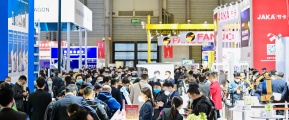The latest research report from Research Nester projects a robust growth trajectory for Surface Mount Technology (SMT), with industry size forecasted to surpass US$6 billion in 2023, and an anticipated market size exceeding US$16 billion by 2036, marking a compound annual growth rate of 8% during the forecast period (2024-2036).
The exponential expansion within the electronics industry, coupled with the downsizing of electronic components and the escalating utilization of flexible printed circuit boards, alongside the burgeoning optimism surrounding the electric vehicle market, are among the pivotal drivers propelling the ascent of surface mount technology. Concurrently, with the advent of Industry 4.0, concepts of intelligent and sustainable manufacturing have become focal points within the SMT industry. For instance, leveraging technologies like the Internet of Things and big data facilitates real-time monitoring and intelligent control of production processes, thereby enhancing production efficiency and product quality. Similarly, adoption of environmentally friendly materials and practices aims to mitigate carbon emissions and curtail environmental pollution throughout the production cycle. In response to these industry trends, the evolution of SMT production lines, guided by the principles of "three highs and four capabilities" (high performance, high efficiency, high integration, alongside flexibility, intelligence, sustainability, and diversification), continues to be under constant exploration and implementation.
Precision Placement: Addressing the Challenge of Chip Miniaturization
The ongoing miniaturization trend in electronic devices, particularly in wearable applications and Internet of Things devices, continues to drive the demand for increasingly intricate circuit designs and diminutive electronic components. To accommodate narrower mounting pitches, the adoption of "solder-free bonding" mounting technology is gaining attention. However, mounting ultra-small components with minimal solder paste poses challenges, as the "self-alignment effect" becomes less effective. Hence, ensuring precise component placement becomes imperative. In recent years, significant advancements in high-precision placement have been witnessed, with the industry witnessing the introduction of placement machines boasting accuracy levels of ±35μm, and some even pushing the boundaries to achieve ±15μm placement accuracy.
Enhancing Efficiency and Reducing Costs: Optimizing the Screen Printing Process
Industry consensus suggests that nearly 70% of process errors on SMT production lines stem from screen printing. Therefore, rectifying these errors holds the potential to significantly reduce costs and enhance efficiency. With the refinement of screen printing automation, factories can achieve high-speed and batch printing, thereby augmenting production efficiency and curbing labor costs.
For further insights into SMT development trends and application prospects, productronica China has brought together leading industry players such as FUJI, JUKI, Guangjiahe Electronics, E-Generation, YAMAHA, Europlacer, Mycronic, HELLER, KURTZ ERSA, Rehm Thermal, Ishikawa, JBC, Quick Intelligent, Zhuhai FACC, Suzhou SMT, Borey, AST, Faroad, JT, MPI, Anda, Desen, Axxon, Suneast, MacDermid Alfa, Indium, and more. We extend a warm invitation to all to register and visit the exhibition!


















